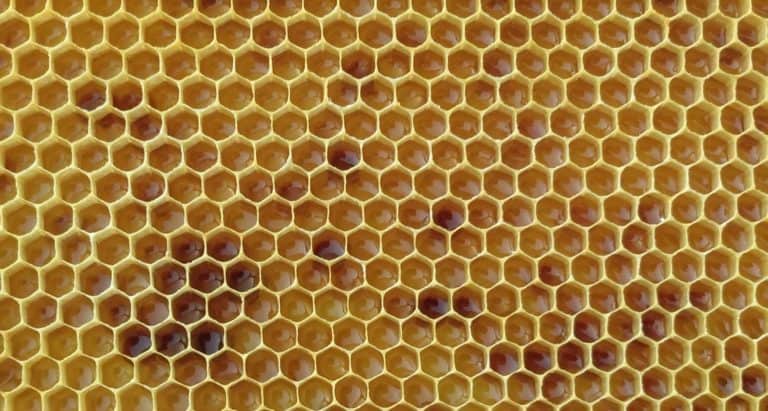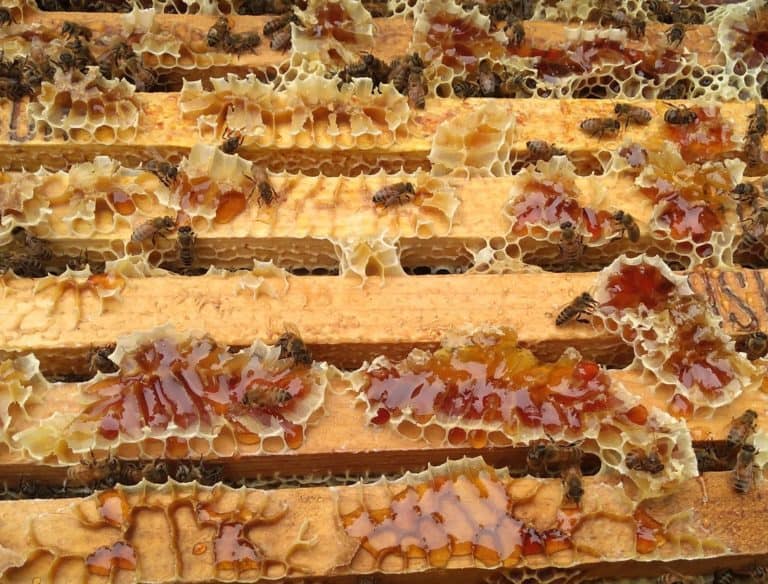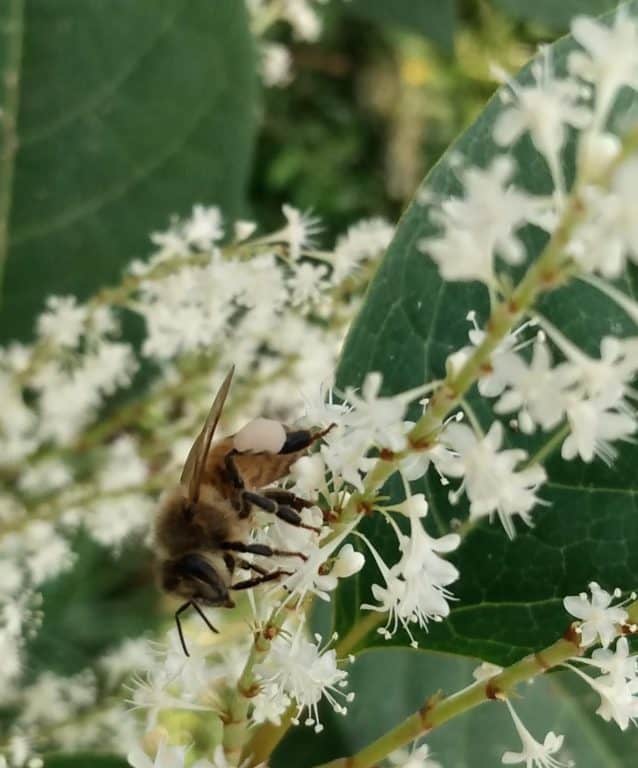A colony of bees is capable of producing honey from a stunning variety of floral sources, but a few years back, when a beekeeper in New York told me his bees were in the midst of making a good fall crop on the bamboo, I was a bit puzzled. Knowing that bamboos belong to the grass family (Poaceae), I questioned a little further about how it was possible for bees to make honey from a grass, and the beekeeper pointed to a patch of dense, shrubby plants covered in white flowers and bees. Continued questioning eventually got to the answer that the “bamboo honey” was actually made from the nectar of Japanese knotweed (Fallopia japonica). Looking past the spade-shaped leaves reveals the plant’s upright, hollow, jointed stems, with swollen nodes between segments, which is why many people – including beekeepers – often refer to Japanese knowtweed as “bamboo”.
Japanese knotweed tolerates a wide variety of climate and soil conditions. It is capable of rapidly spreading, and its underground network of roots can damage building foundations and pavement, making it very difficult to eradicate once it has become established. It is a common colonizer of stream banks, often growing densely for great stretches on both sides of waterways, crowding out other plants. These aggressive and persistent habits have led to it being considered one of the worst invasive species in the world. But even though many view Japanese knowtweed as problematic, most beekeepers have a different view.

Although it is not related to bamboo, Japanese knotweed does share a family with buckwheat (Fagopyrum esculentum), another excellent bee plant. Like buckwheat, the nectar from Japanese knotweed yields honey towards the darker end of the color spectrum, sometimes described as red. The honey has a strong flavor, but it is not as intense as buckwheat honey. Knotweed honey is also reported to granulate readily.


Bloom occurs in late summer to early fall, with beekeepers reporting that bees work the bloom for approximately 2 weeks. In the northeast U.S., the timing of the bloom overlaps with the fall goldenrod (Solidago spp.) flow, while in other locations, Japanese knotweed is one of the only sources of fall forage for honey bees. While beekeepers seem to be primarily focused on the nectar provided by the plants, I did also see bees gathering pollen from the flowers.

